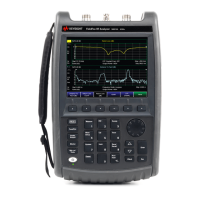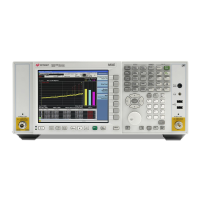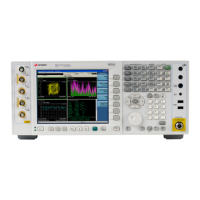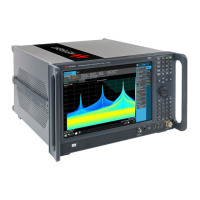Keysight N9927-90001 User’s Guide 53
CAT (Cable and Antenna Test) Mode
Return Loss Measurements
Return Loss Measurements
Return loss can be thought of as the absolute value of the reflected power
compared to the incident power.
When measuring an OPEN or SHORT, all incident power is reflected and
approximately 0 dB return loss is displayed.
When measuring a LOAD, very little power is reflected and values of 40 dB to
60 dB are displayed.
The minus sign is usually ignored when conveying return loss. For example, a
component is said to have 18 dB return loss, rather than –18 dB.
How to Measure Return Loss
— Connect the jumper cable or any adapter used to connect the device under
test (DUT).
— Select Preset
then Preset Returns the FieldFox to known settings
— Select Mode
then CAT/TDR (Cable and Antenna Test)
—Then Return Loss
(Default measurement).
—Press Freq/Dist
and enter Start and Stop frequency values of the
measurement.
—Press Meas Setup 4
then Settings to make appropriate settings before
calibrating.
— Disconnect the jumper cable or DUT and press Cal 5
then follow the
calibration prompts.
— Reconnect the jumper cable or DUT.
— The return loss trace is displayed on the FieldFox screen.
1-Port Cable Loss Measurements
While all cables have inherent loss, weather and time will deteriorate cables
and cause even more energy to be absorbed by the cable. This makes less
power available to be transmitted.
A deteriorated cable is not usually apparent in a Distance to Fault
measurement, where more obvious and dramatic problems are identified. A
Cable Loss measurement is necessary to measure the accumulated losses
throughout the length of the cable.
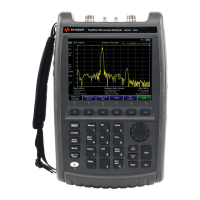
